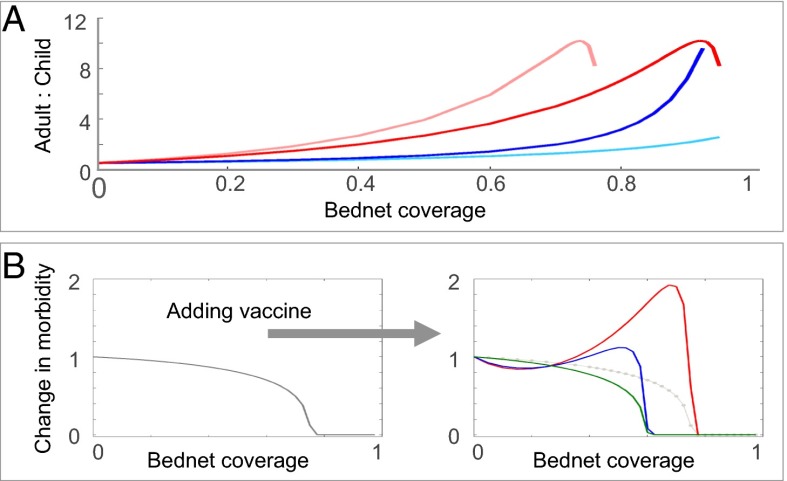Fig. 2.
(A) Changes in the ratio of adult to child morbidity with different levels of bednet use, calculated by dividing levels of morbidity with intervention to those without it. An increase in the ratio of relative morbidity demonstrates increased burden on the productive class. Different forms of insecticide treatment of repelling (ε) and killing (ξ) are considered (see Methods): pink: ε = 0, ξ = 0.2; red: ε = 0.2, ξ = 0.2; dark blue: ε = 0, ξ = 0; and light blue: ε = 0.2, ξ = 0. SI Appendix, Fig. III-1 shows that with higher bednet use child morbidity generally decreases while adult morbidity increases. Notably, when bednets are treated with relatively mild repellent (ε = 0.2) they are less effective than those that are not treated (ε = 0), indicating that the repulsion of mosquitoes from nets is likely to have a counter-productive effect that suppress their benefits if bednets do not also lead to enhanced mosquito mortality. This can occur as the nets age and the bednet declines in potency emphasizing the superiority of LLINs over ITNs. For further discussion on the implications of repelling vs. killing for control see SI Appendix, section III. (B) Relative morbidity as a function of bednet coverage calculated by dividing total morbidity with bednets to that without them. (Left) Without vaccine and (Right) with vaccine for BSV (red), PEV (blue), and TBV (green), where children are vaccinated on average once a year. Parameters are identical to those in Fig. 1.

